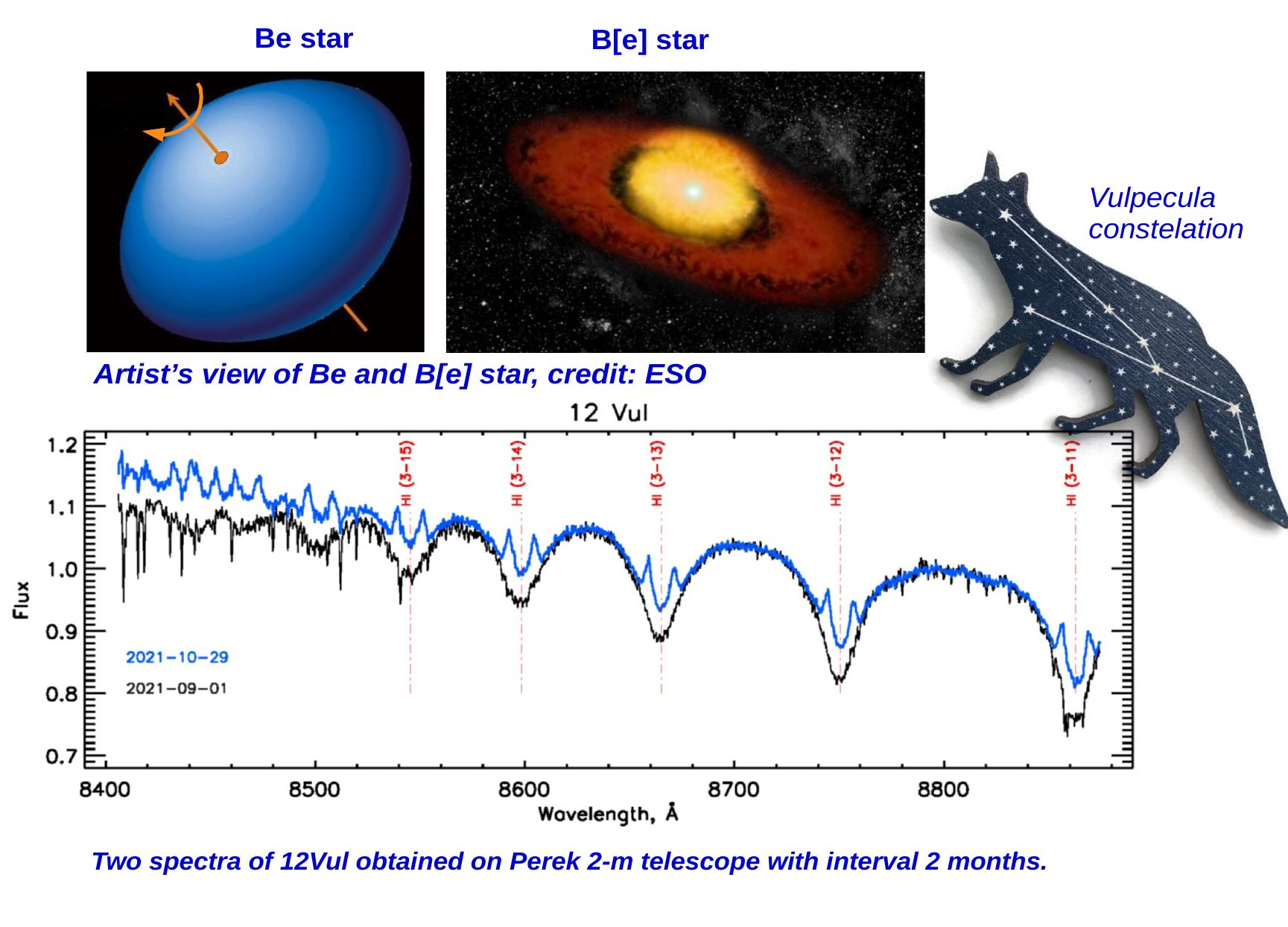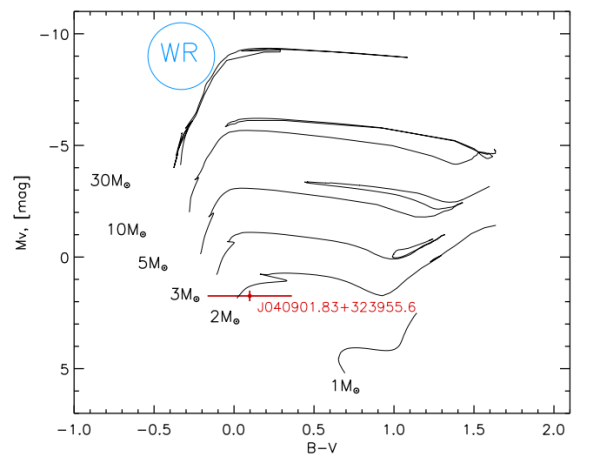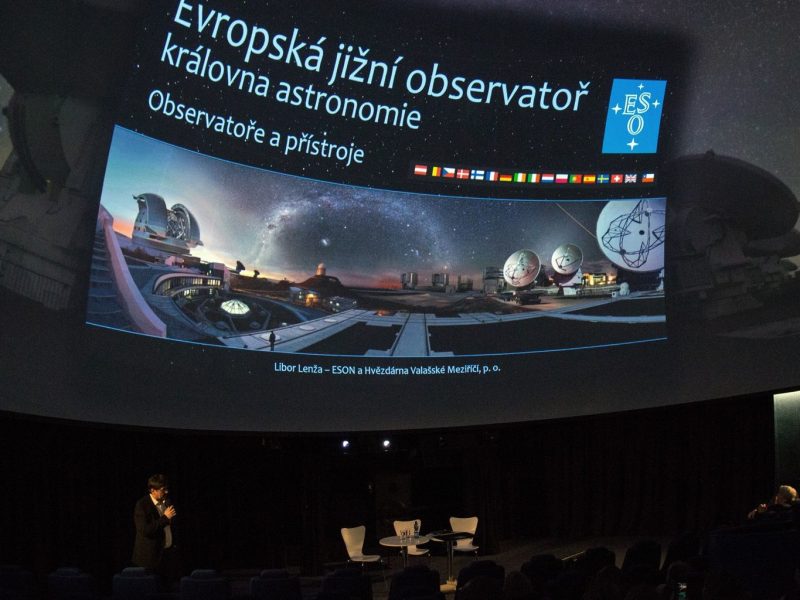The class of hot B-type stars consists of various sub-groups among which we find the classical Be stars and the more exotic B[e] stars. Both groups of stars display indication for a circumstellar disk. The disks around Be
stars are composed of ionized gas that has been released from the surface of these rapidly rotating objects. This circumstellar gas is traceable by the double-peaked profiles of the hydrogen emission lines in the spectra
of such objects. In contrast, nothing is known about the mechanism of disk formation around B[e] stars. But their disks are usually so dense that molecules and dust can condensate.
In a recent study scientists from ASU CAS and Argentina demonstrated that the bright star 12 Vulpeculae (12 Vul) may be the first object which has properties of both Be and B[e] stars. Sometimes it shows strong emission of ionized gas and sometimes clear molecular line emission in the infrared range. This star is one of our favorite objects that we regularly observe with the Perek 2-m telescope, because it could provide the missing link between classical Be stars and B[e] stars.
Our new observations in October showed that strong double-peaked emission again appeared in the spectra of 12 Vul. Thanks to the well-coordinated international collaboration in the frame of the POEMS project, immediately after the detection of hydrogen line emission, our Argentinian colleagues acquired new data on the GEMINI telescope in the infrared range. Now we will be able to directly study how the appearance of hydrogen emission is connected with the emergence of molecular lines and better understand the mechanisms of disk formation in B[e] stars.
- scientific paper Intriguing detection of 12CO molecular emission in a classical Be star
- POEMS project
Contact: Michaela Kraus, Olga Maryeva



